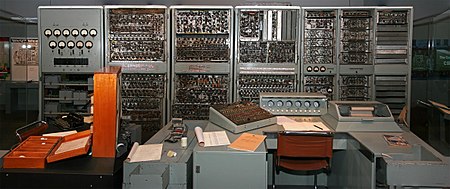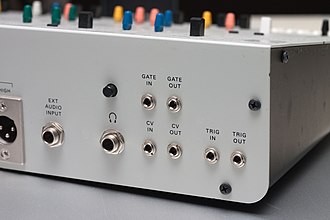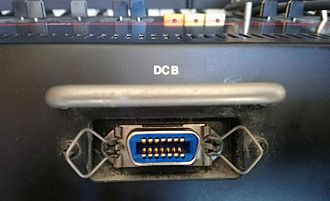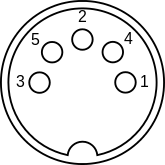History
This page covers some of the basic history of computer music development and some of the first tools used that paved the way for modern electronic music composition.
The First Computer Music
The first computer to intentionally play music was the CSIR Mark 1 (CSIRAC), which was Australia's first computer in 1950. There was speculation that older computers and electronic devices had played some semblance of music before, but there is no evidence of such events occuring, or if they were intentionally palying music. Though the recordings of the first computer-played song were never made, reconstructions from the original code have been made to accurately as possible replicate the audio. The first "song" to be played on the CSIRAC was Colonel Bogey March. See if you can tell if they are the same song.
The first computer to intentionally play music was the CSIR Mark 1 (CSIRAC), which was Australia's first computer in 1950. There was speculation that older computers and electronic devices had played some semblance of music before, but there is no evidence of such events occuring, or if they were intentionally palying music. Though the recordings of the first computer-played song were never made, reconstructions from the original code have been made to accurately as possible replicate the audio. The first "song" to be played on the CSIRAC was Colonel Bogey March. See if you can tell if they are the same song.

Introduction of MIDI
MIDI stands for Music Instrumentation Digital Interface and has been the defacto digital music file format since its introduction and standardization in 1983. It was developed by Dave Smith, founder of Sequential Circuits and Ikutaru Kakehashi of the Roland Corporation.
Prior to MIDI, there were no standards digital music data. Every company developed its own proprietary communication protocol for its hardware. Some examples are CV/gate and Digital Control Bus (DCB). This meant that music developed on two different sets of hardware could not be played, modified, or mixed together.
With the introduction of MIDI coinciding with the increasing popularity of home PCs, consumers could now record and mix audio in their own homes making amateur audio production much more accessible to the public. The first computers to support MIDI were the NEC PC-88 and the PC-98 in 1982, as well as the Yamaha CX5M in 1983. The introduction of MIDI is also credited for pushing the music industry out from the fractured divide of post-Vietnam to the electrice New Wave of the 80s and 90s.
The primary benefits of MIDI are that it provides a user with no knowledge of traditional music notation to be able to generate sounds and music. In addition, the standardization of the communication protocol betwen the instrument and computer made specialty hardware more wildly available. In conjunction with the Home PC Boom of the 80s and 90s, anyone with a computer and hardware could become the composer, conductor, and orchestra.


